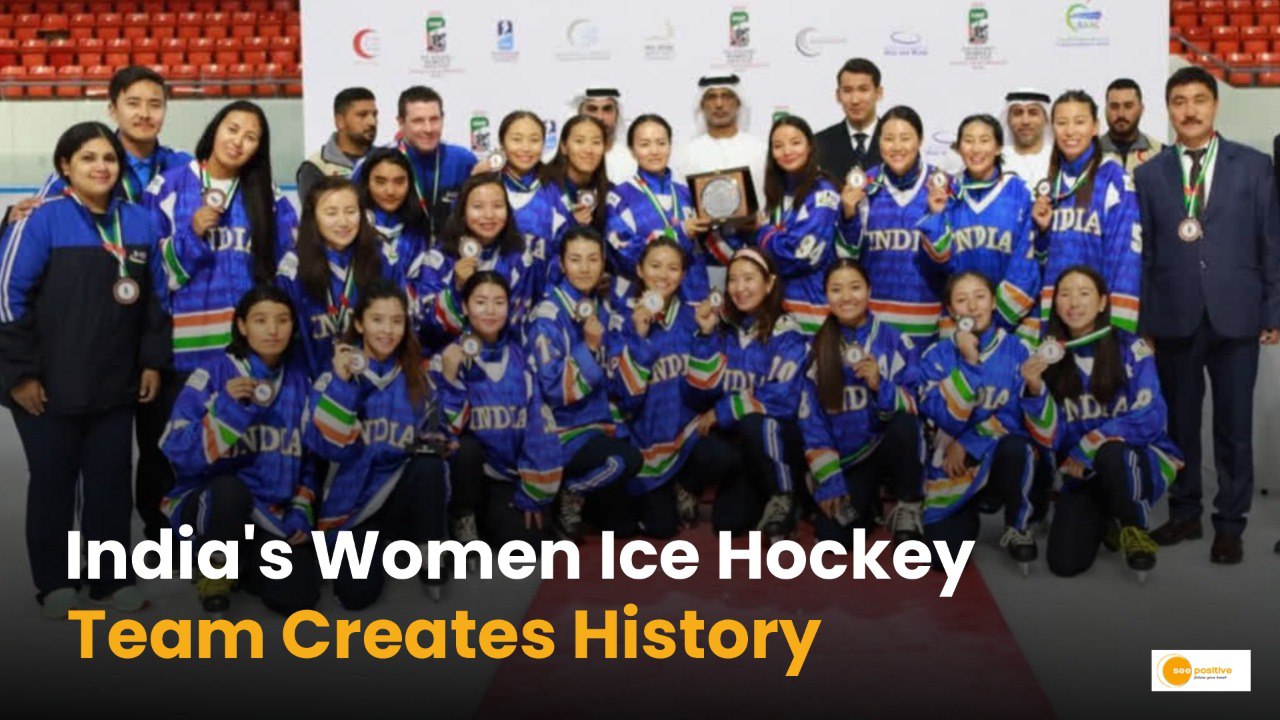2025 IIHF Women’s Asia Cup: In a nation where cricket dominates headlines and sporting budgets, a group of determined women from the icy landscapes of Ladakh have quietly carved their place in history. India’s women’s ice hockey team, once overlooked and under-resourced secured their first-ever bronze medal at the 2025 IIHF Women’s Asia Cup.
This wasn’t just a sporting milestone. It was a triumph of resilience, grit, and national pride forged in freezing temperatures on frozen ponds and rugged terrain.
From Ladakh to International arena
Unlike most sports teams that train in world-class facilities, India’s women ice hockey players began their journey on makeshift rinks—often frozen rivers and lakes in the high-altitude regions of Leh and Kargil. Wearing borrowed gear and practicing in sub-zero conditions, they grew up playing against the odds.
Ladakh, a region known for its stark beauty and harsh winters, provided the perfect—albeit unforgiving—cradle for the sport. But it was not the conditions that held them back. It was the lack of visibility, infrastructure, and institutional support.
Despite these hurdles, a passion for the game and an unbreakable team spirit led these young women to keep skating forward.
Historic Moment at the Asia Cup
From the rugged peaks of Ladakh to earning their maiden bronze medal at the 2025 IIHF Women’s Asia Cup, the Indian Women’s Ice Hockey Team has scripted an inspiring story. Competing in the tournament held from May 31 to June 6 in Al-Ain, United Arab Emirates, the team faced five other countries over the course of five matches. With three wins and two losses, they clinched a well-deserved third-place finish.
Thin Budgets, Thick Determination
The journey to the Asia Cup was anything but smooth. The team has long struggled with limited funding, lack of sponsorships, and outdated equipment. Much of their support has come from NGOs like the Ice Hockey Association of India (IHAI) and grassroots crowdfunding campaigns.
Many players trained without personal coaches or physiotherapists. Their travel and lodging were often arranged at the last minute, sometimes with the players themselves pooling in money to make ends meet.
Supporting Winter Sports
Their performance in the Asia Cup has reignited conversations about supporting winter sports in India. Schools in Ladakh have reported increased interest among girls in learning ice hockey, and local communities are working to create more rinks and training centers.
More importantly, the team has shattered stereotypes—proving that Indian women can excel even in the most physically demanding and unconventional sports.
Conclusion
The story of India’s women’s ice hockey team is more than just a tale of medals and matches. It is a story of dreams born in silence and fulfilled on the world stage. Of skating not just against opponents, but against invisibility, indifference, and inertia.


